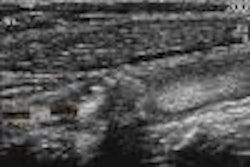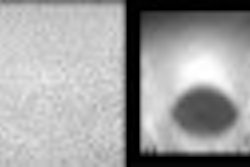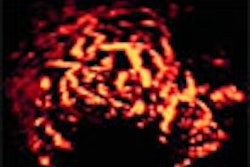(Ultrasound Review) Color Doppler sonography of hepatic artery reconstruction in liver transplantation was evaluated by Italian radiologists to establish normal post-transplantation values. Doppler has proven to be a useful, noninvasive diagnostic tool for patients suspected of thrombosis or stenosis of the hepatic artery. This retrospective study was outlined in the Journal of Clinical Ultrasound, and the results establish important diagnostic criteria for evaluating patients with liver transplants.
They retrospectively reviewed the ultrasound examinations for 48 normal patients performed 3-6 months after transplantation. End-to-end arterial anastomoses were performed in 30 patients and 18 had infrarenal aortohepatic bypasses. According to the authors "end-to-end anastomoses are short and have a uniform small caliber; aortohepatic bypasses are longer and have a progressively smaller caliber." Doppler of the hepatic artery was performed and measurements of peak systolic velocity (PSV), end diastolic velocity (EDV), and resistive index (RI) were measured.
Color Doppler was used to locate the arterial bifurcation around the level of the common hepatic duct, and spectral Doppler used to obtain representative waveforms. All Doppler angles were less than 60°.
As they suspected, Doppler measurements were significantly different, depending on the type of anastomosis. They demonstrated a low-resistance pattern (low RI) in the end-to-end group, and high resistance waveforms (high RI) with low diastolic flow in the group with aortohepatic bypasses.
"On the basis of our results, we conclude that in patients with an end-to-end anatomosis an RI less than 0.5 does not indicate the presence of stenosis," they reported. However, RI less than 0.5 in the aortohepatic bypass group are indicative of complications. When the RI is 0.7 this is normal for the aortohepatic bypass group, but indicates an increase in intrahepatic resistance in the end-to-end group. There was no significant difference between the PSVs and EDVs for the two groups. In all patients, the systolic acceleration time was <0.08 seconds.
"Spectral waveform and RI are associated with the length and caliber of the type of hepatic artery anastomosis used," they concluded. Knowledge regarding the type of anastomosis is essential when assessing postsurgical complications because of the effect on the arterial waveform and resultant diagnostic accuracy.
By Ultrasound ReviewApril 11, 2002
"Color Doppler sonography of hepatic artery reconstruction in liver transplantation"
De Candia, A. et al
Istituto di Radiologia, Universita di Udine, Udine, Italy
Journal of Clinical Ultrasound 2002 January; 30:12-17
Copyright © 2002 AuntMinnie.com



















